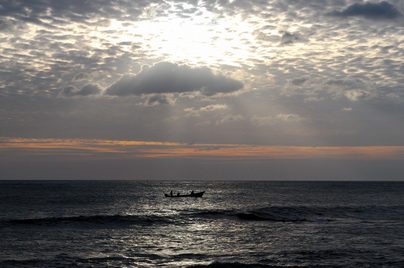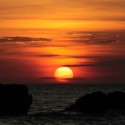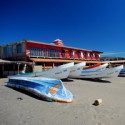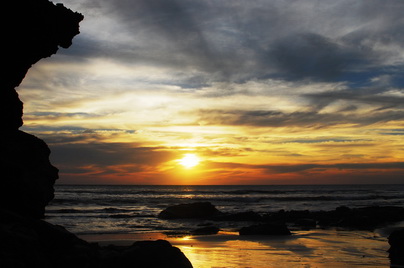Casares the Chief Navigator
Author: Dr. Edmundo Mendieta Gutierrez
Photography: Jimmy D. Mendieta
Translator: Jeffrey G. Mendieta

Fishermen risking their lives in the vast ocean and under the gorgeous sunset. Casares Beach, Carazo, Nicaragua
In an interview with El Diario La Prensa, Dr. Edmundo Mendieta Gutierrez tells the legend of how Casares Beach got its name.
The legend tells that in coastal lands in Carazo in a village dotted with thatched huts sheltered by palm trees, guanacastes and lush tamarinds. there lived the chief Casares. The chief Casares was a wise indian who, like San Francisco of Asis, talked to all the creatures of Heaven and Earth. One afternoon he led his tribe to the seashore and there said to them, “From across the ocean have come perverse men who will try to destroy our gods, we must learn to navigate the sea to save us and save our beliefs.”
Right away all the members of the tribe dedicated themselves to build a giant pirogue in which they deposited their manuscripts, sacred idols and plenty of food. When the Spanish arrived, they could still see out from the shore, the giant pirogue in which the indians sailed to sea, singing to the beat of a kettledrum inherited from their ancestors. It is unknown what became of Casares and its people. They say that on the nights of a full moon, the canoe can still be seen silhouetted against the Moon. At midnight the shadows of the members of the tribe disembarc on the beach, and sing to the beat of the cheif’s tom-tom drum, a long sad love song.
(Dr. Edmundo Mendieta, tomado del Diario La Prensa el diario de los Nicaraguenses)




